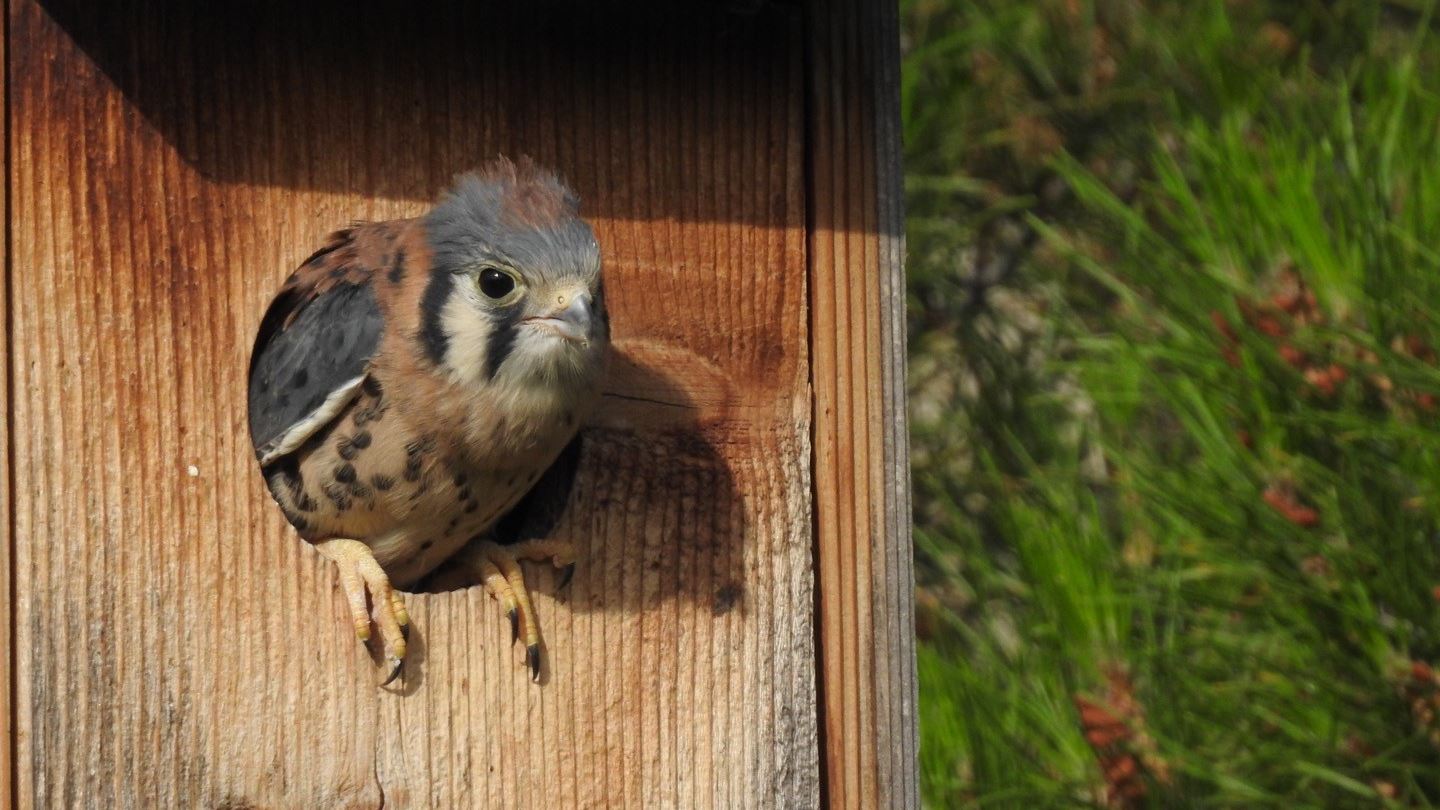A project underway at New Mexico State University aims to help one of North America’s tiniest falcons – and avian enthusiasts across the Mesilla Valley can join the effort.
Abril Avila Enriquez, an undergraduate student at NMSU, has teamed up with Martha Desmond, an NMSU Regents professor, to initiate a new study to collect data on the small, non-aggressive falcon known as the American kestrel.
American kestrels are the most common falcon in North America, but their populations are declining across the continent due to habitat loss. Figures from the North American Breeding Bird Survey indicate populations of American kestrels declined by an estimated 1.39 percent per year between 1966 and 2017.
The diminutive raptors are natural pest controllers that prey on small insects and rodents harmful to gardens and crops. They nest in tree cavities, prefer to forage in open areas and boast striking plumes. Adult males have slate-blue heads with matching wings and rusty-red backs and tails, while female adults have gray crowns and rusty-red wings, backs and tails.
Avila Enriquez said American kestrels sparked her interest last summer during an internship. She and Desmond later came up with an idea to study the effectiveness of nest boxes on the species in the Mesilla Valley. Their study involves installing cedar nest boxes in green spaces and agricultural areas throughout Las Cruces, and monitoring adults and hatchlings during the breeding season to determine if nest box placement resulted in reproductive success.
“The American kestrel happens to be a bird that is suffering from loss of natural cavities due to loss of trees,” said Avila Enriquez, who is double-majoring in fish, wildlife and conservation ecology and environmental engineering. “I wanted to see how I could combine both of my majors and create a project out of that, and we came up with this idea.”
Earlier this month, Avila Enriquez and Desmond began installing boxes in nesting locations. They have about 100 boxes in total but need help scouting areas to place them – so they’re inviting residents across the Mesilla Valley to help their research effort.
“If people in the community have the appropriate habitat – we’re looking for large old trees with open canopies and in open areas – they can email us a picture of their tree, and we’ll come out and put a box up,” Desmond said. “Or, if people have sightings of kestrels in their backyards, they can take a picture and share it with us.”
Community members can email pictures to mdesmond@nmsu.edu or aavila9@nmsu.edu, or call 575-646-1217 for additional information.
By mid-March, Avila Enriquez and Desmond started monitoring the boxes every week and taking pictures of the nest contents with a camera mounted on a 14-foot fishing pole.
“By taking pictures of what’s in the boxes, we’ll know when chicks hatch, how old they are, and when they’re going to leave,” Desmond said.
Before the hatchlings leave the boxes, Desmond said she and Avila Enriquez will band, weigh and evaluate them. They will also capture, band and release each adult.
Desmond said the project will likely last several years and generate plenty of critical data.
“We’ll model nest-box use and nest success to help us determine the best places to place the nest boxes,” she said. “Through nest monitoring of banded falcons, we’ll be able to look at the factors that affect the survival of American kestrels and factors that affect their reproductive success. Our goal is to help better manage areas to enhance populations for this species.”
Desmond initiated the project through a program called “ENHANCEMENT” – short for “Enhancing Hispanic Access to Natural Resource and Agricultural Careers through Education, Mentorship, and Training.”
The program, funded through a $1 million grant from the United States Department of Agriculture’s National Institute of Food and Agricultural, aims to transform the educational experience for underrepresented students and increase accessibility and workforce opportunities in natural resources and agriculture. Desmond serves as the program’s co-principal investigator.
Avila Enriquez, who expects to graduate in 2024, said the project has been a rewarding learning experience.
“I think what I’m enjoying most about this project is the possibility of soon handling these birds,” she said, “and knowing that we may make a difference for these birds, even if it's on a smaller scale.”

